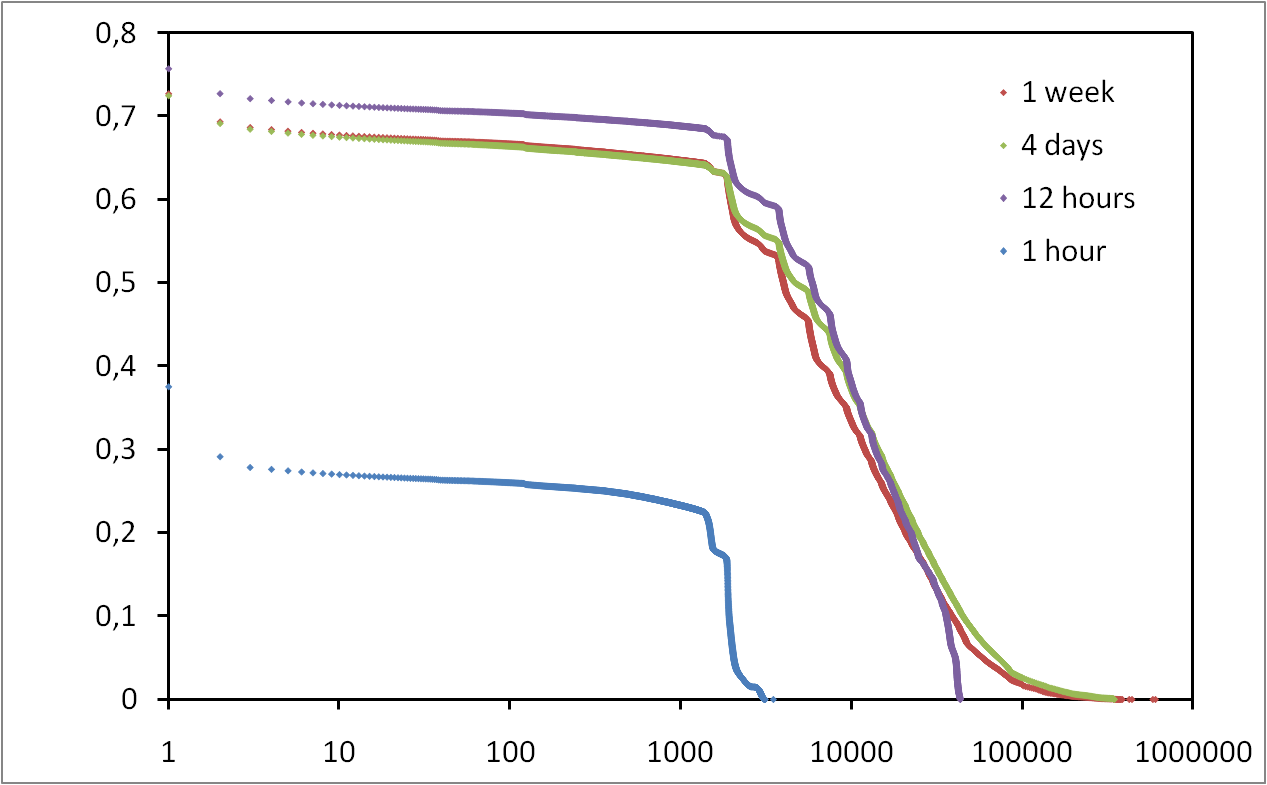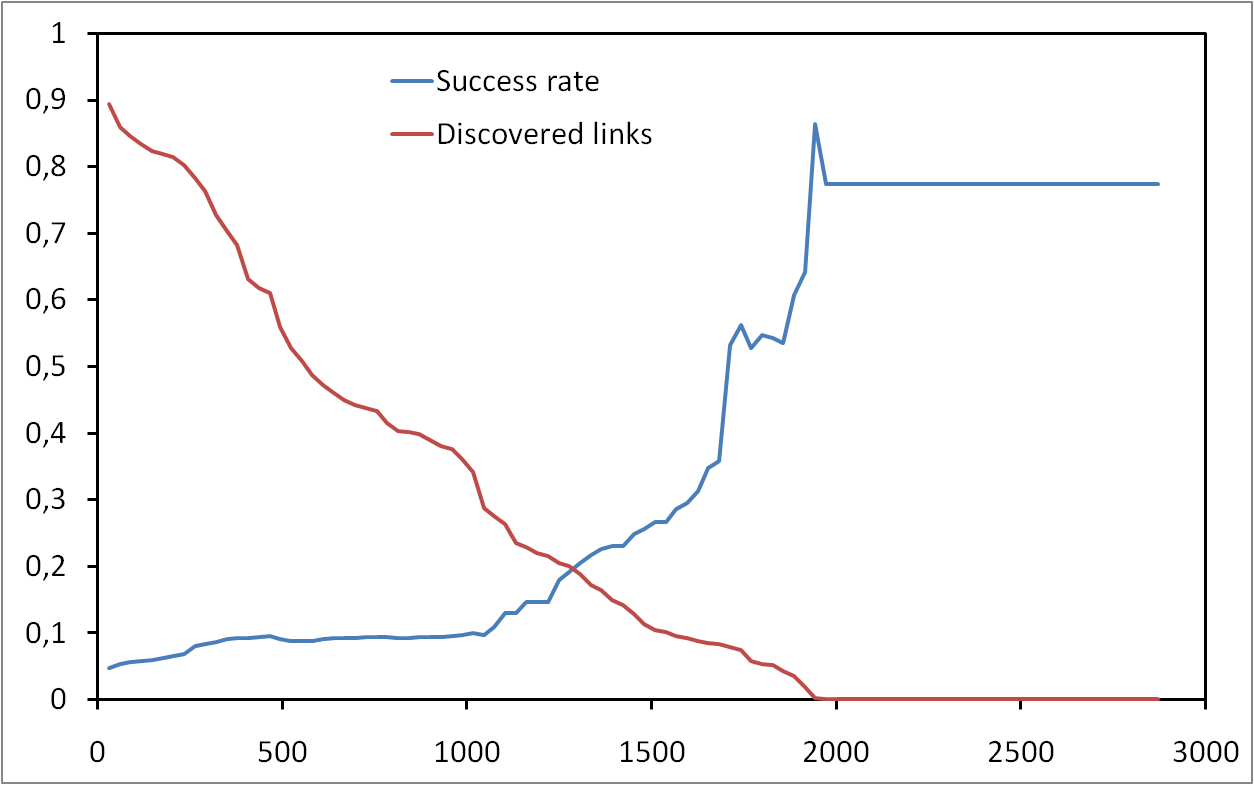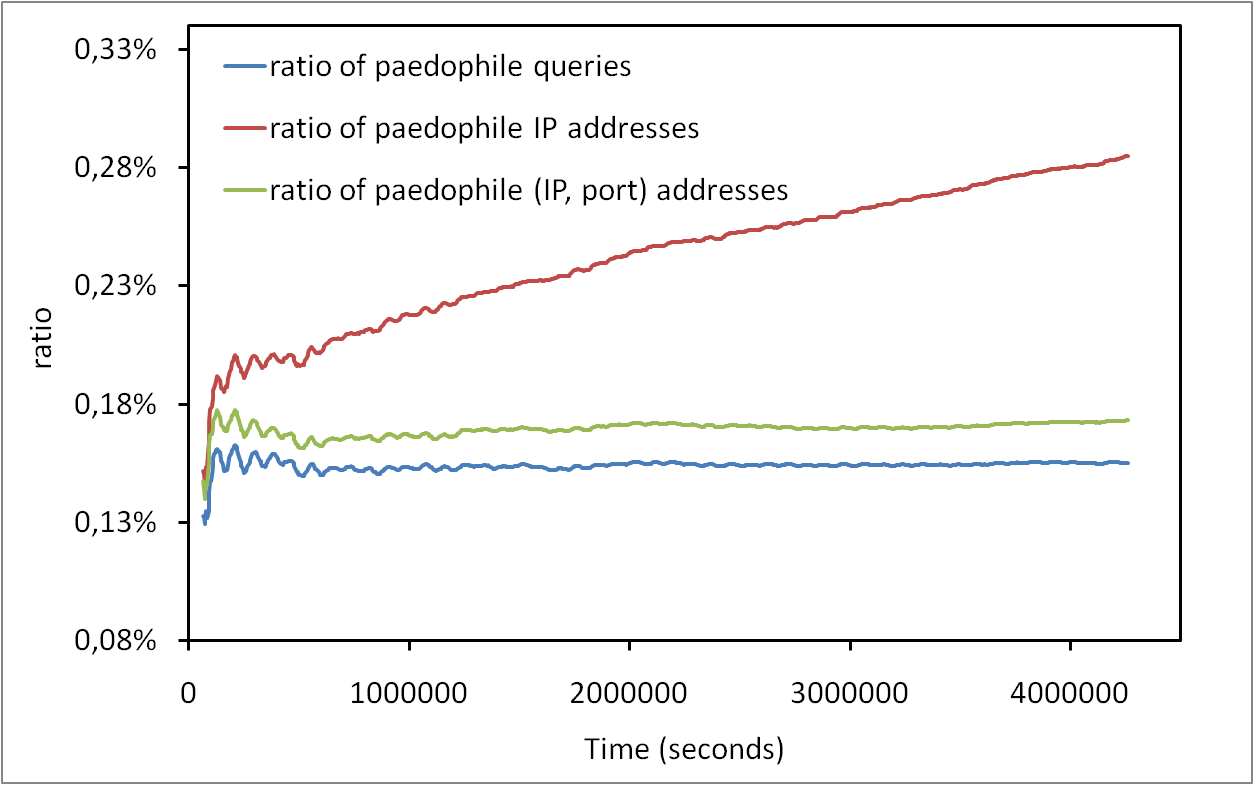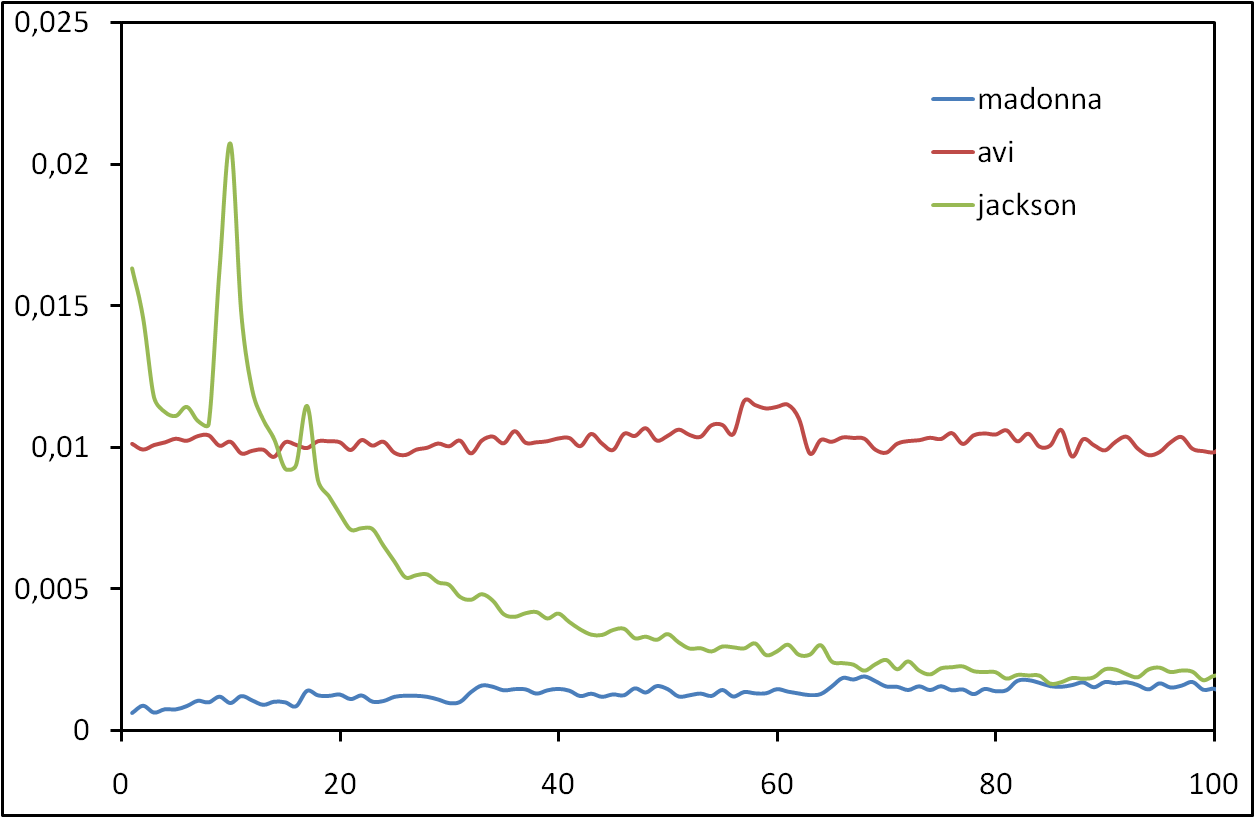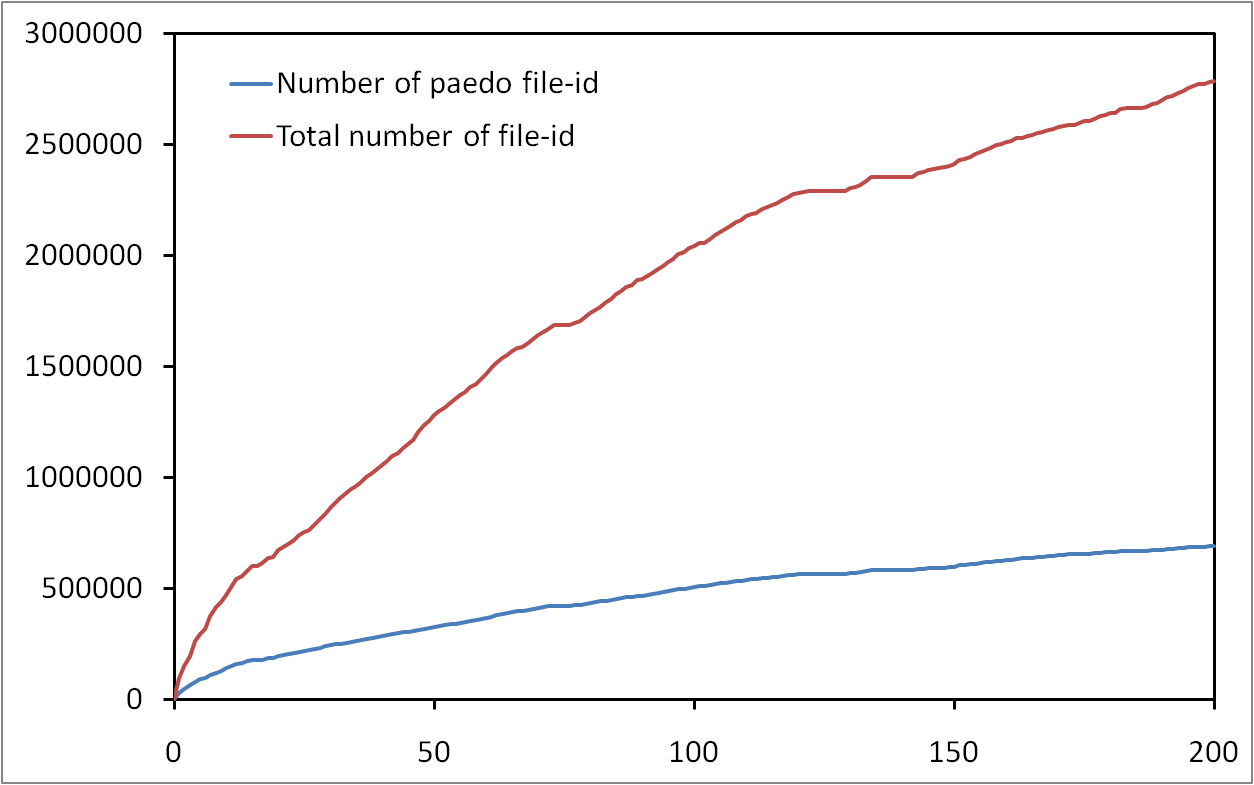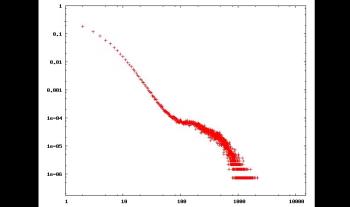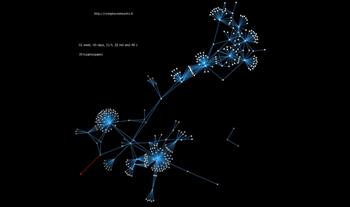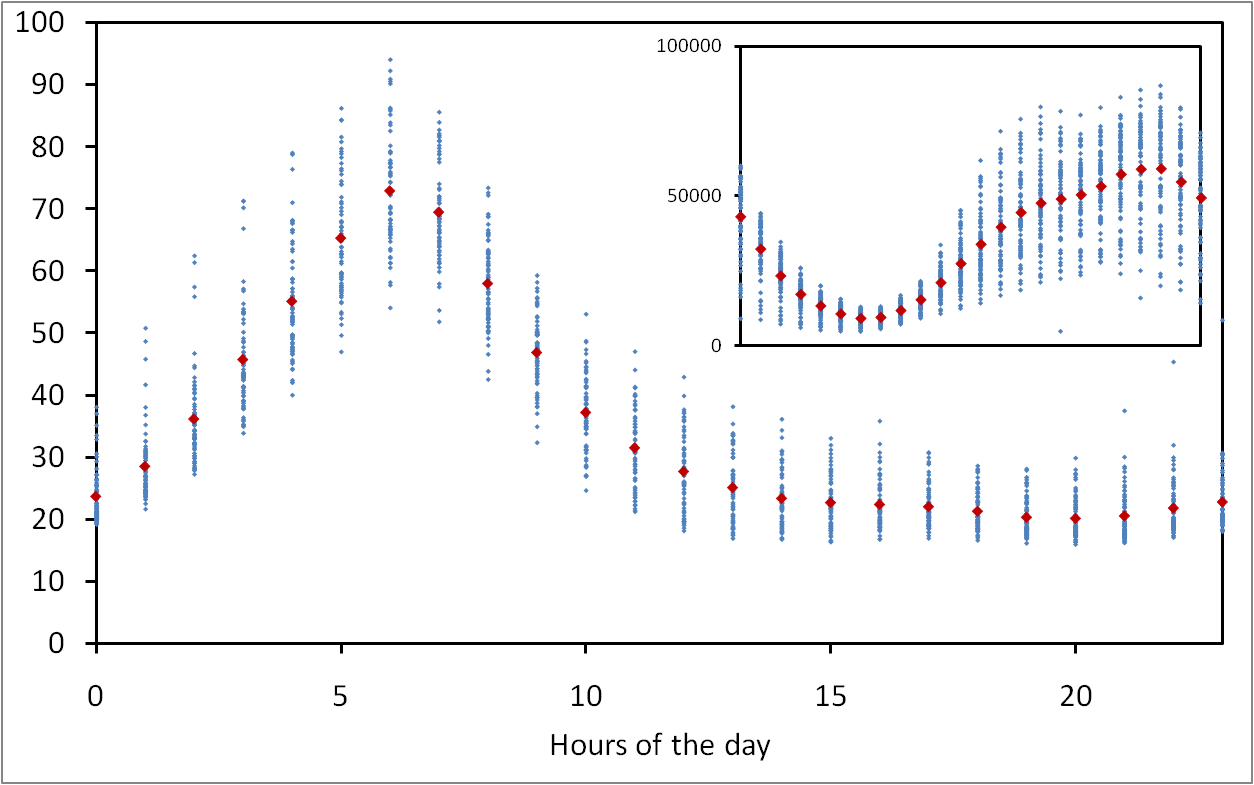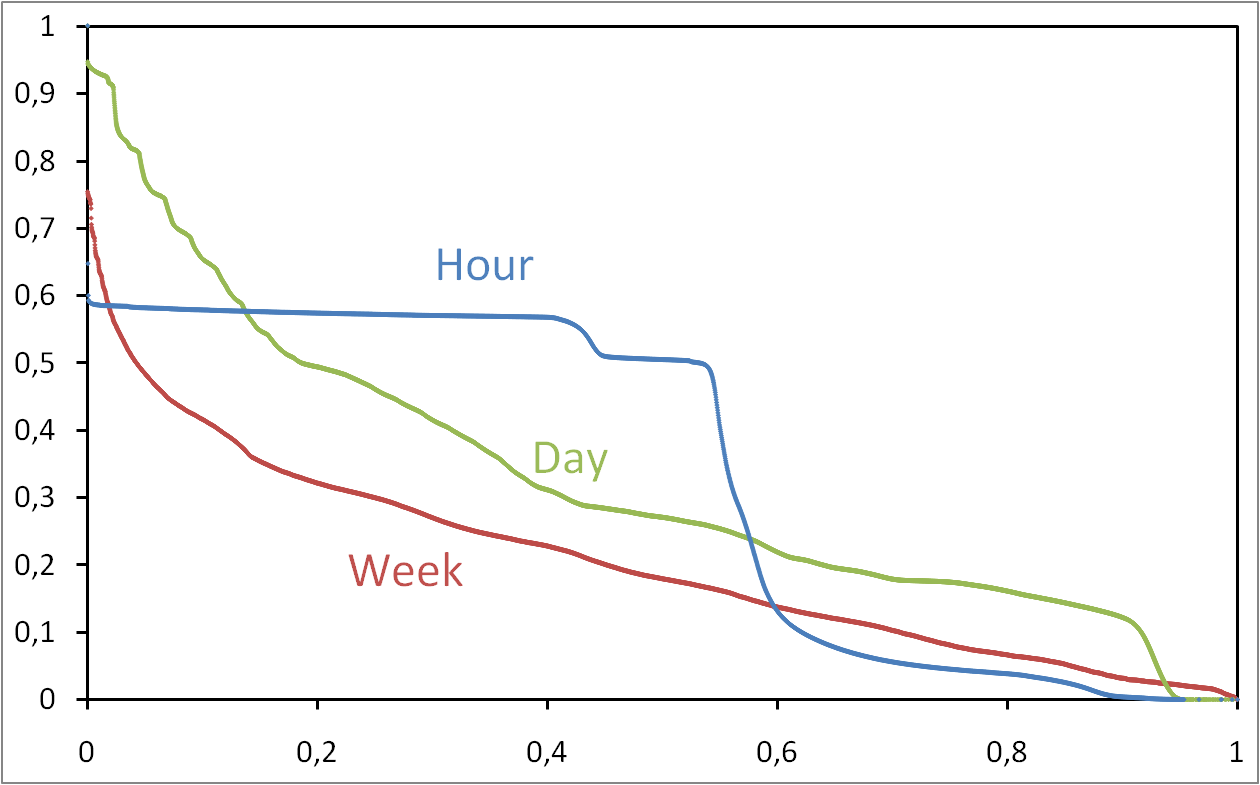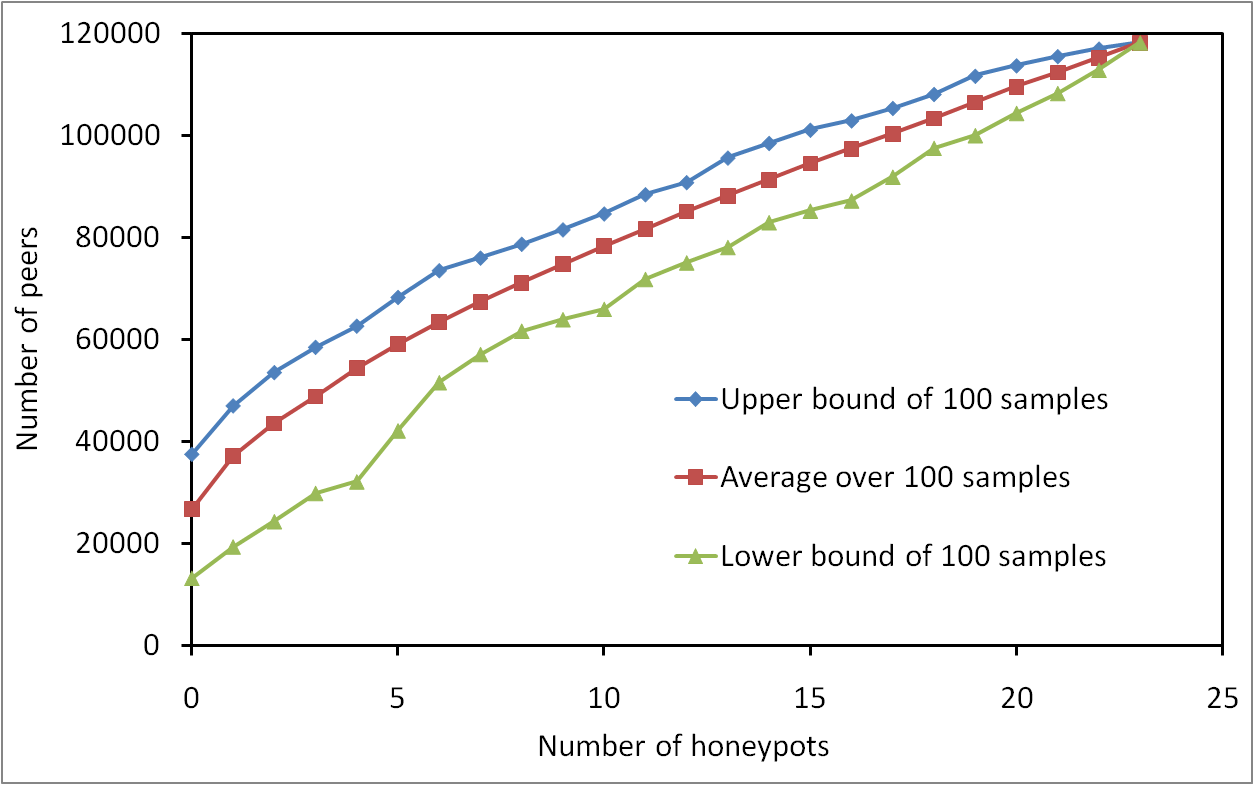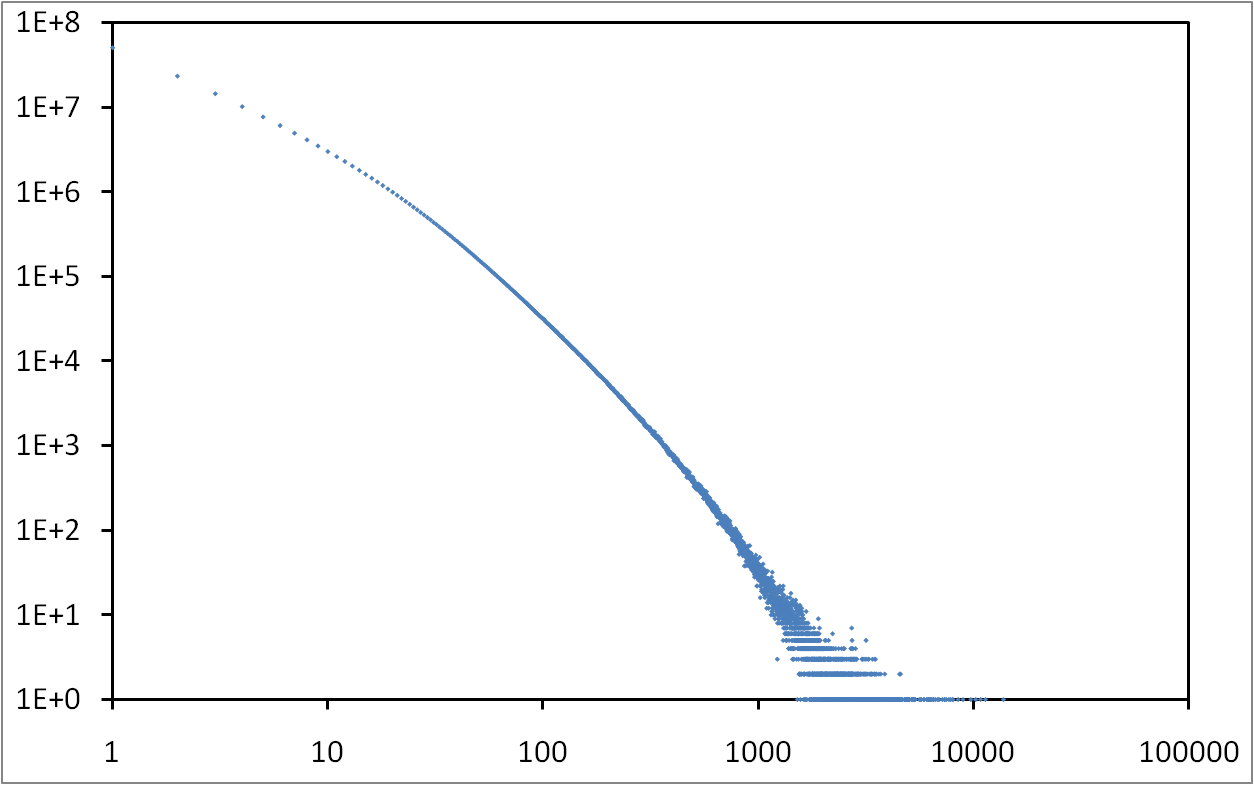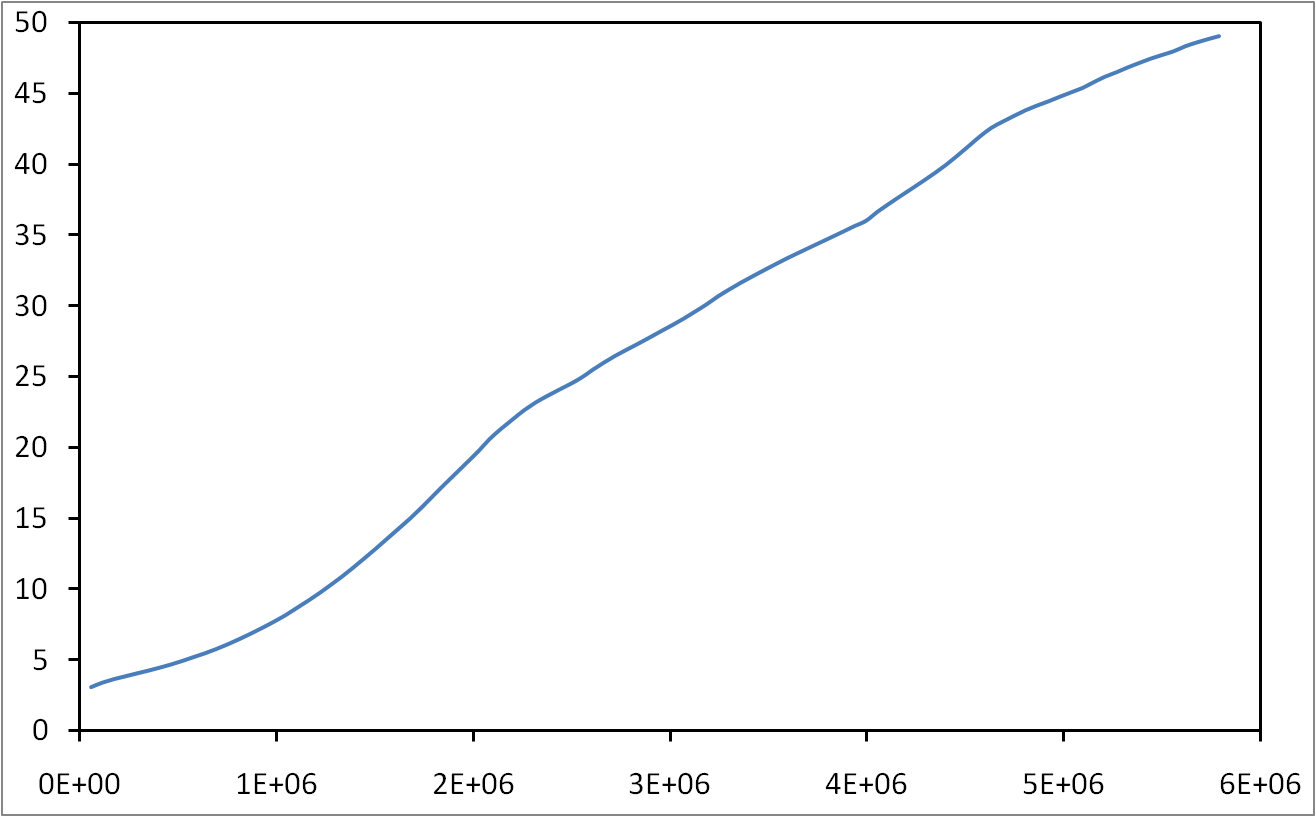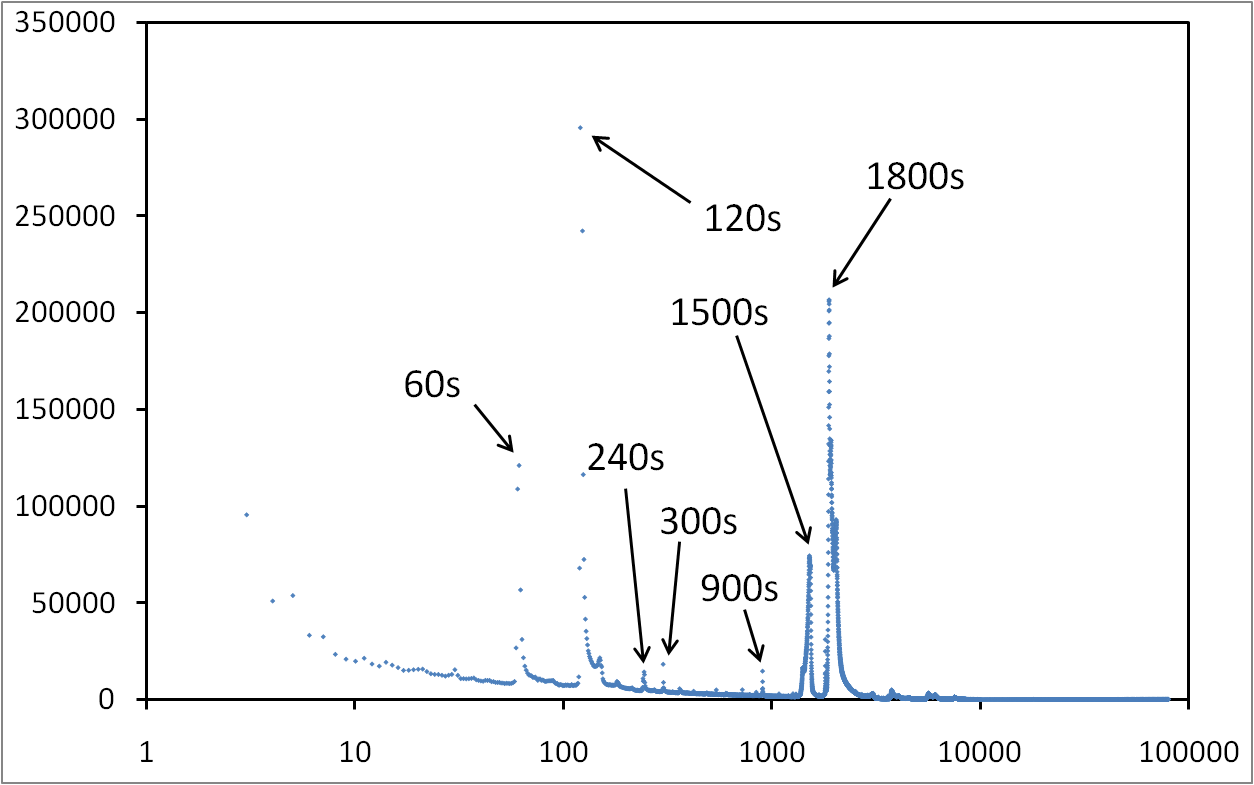Daniel F. Bernardes, Matthieu Latapy, Fabien Tarissan
Proceedings of the 2012 IEEE/ACM International Conference on Advances in Social Networks Analysis and Mining (ASONAM 2012), Istanbul, Turkey
Understanding the spread of information on complex networks is a key issue from a theoretical and applied perspective. Despite the effort in developing theoretical models for this phenomenon, gauging them with large-scale real-world data remains an important challenge due to the scarcity of open, extensive and detailed data. In this paper, we explain how traces of peer-to-peer file sharing may be used to this goal. We also perform simulations to assess the relevance of the standard SIR model to mimic key properties of spreading cascade. We examine the impact of the network topology on observed properties and finally turn to the evaluation of two heterogeneous versions of the SIR model. We conclude that all the models tested failed to reproduce key properties of such cascades: typically real spreading cascades are relatively “elongated” compared to simulated ones. We have also observed some interesting similarities common to all SIR models tested.

